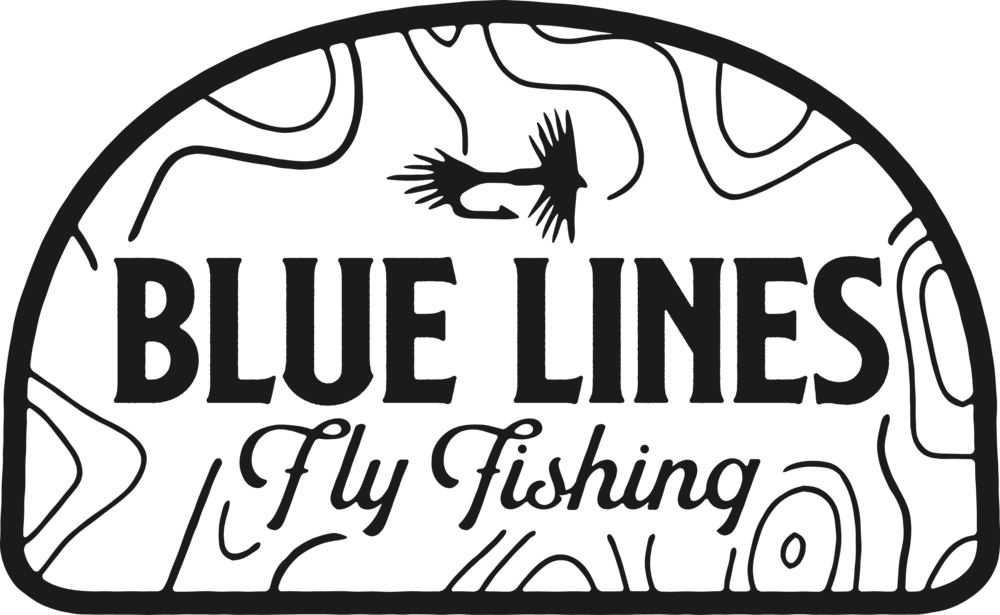By Sam Larson
I’d like to take a moment and recognize that my first impulse was to name this piece, “Fly-losophy”. I did not do that and I think that we’re all better for it.
On a more serious note, fall is just around the corner. Fall, to me, means finally having figured the whole fly fishing thing out, again, and finally getting my cast perfectly dialed, again, only to now be caught staring winter’s oncoming cold directly in the face. Cast ye hoppers while ye may, I think, but I’m also already piloting my way through winter’s darkness by the light of the lamp on my tying desk. Tying flies in winter is one of the things that keeps the memories of last summer close and stokes the fires high to get back out into the woods next year.
I am an informal fly tyer. I have stolen heavily from a great number of people and resources and smashed all those tricks, tips, preferences, and shortcuts into what I’d call my personal style. There’s not much to it but, in the way of most relatively substanceless and unimportant things, I’ve developed a fair number of opinions and tactics for filling my fly box.
I don’t match the hatch
I like a sketch or a caricature. I do not like the fussy, overly precise pedantry that wants to discuss the genera or Latin names of the mayflies coming off the water. The fish, I am sure, don’t care whether it’s Drunella grandis or Drunella dodsii that are hatching at the moment. I can’t say that I do either. At this point in the conversation is typically when someone rolls out their spiel about educated trout, pressured waters, and this one time when they had the exact fly they needed in the right size because they carry nine fly boxes with them on the water at all times. I am lucky that I can just go somewhere else, a smaller stream with fewer people where brookies are likely rising to anything smaller than a size 14. So when I tie flies or modify patterns I strive for generalism, a certain inherent bugginess that could be any mayfly. A leggy nymph pattern that works for almost any river. Fly patterns that look, when you squint at them or see them from from a trout’s perspective, below and through the shimmer of the sun on the water, like a bug.
Deer hair and peacock herl possess magical qualities
I cannot overemphasize this fact. Deer hair, as a wing, tail, or trailing shuck, is an incredible tying material. Peacock herl possesses a shimmer and movement unlike anything else. And, at least to my knowledge, there are not synthetics that look, act, or tie quite like the real thing. I use both materials heavily in most of my flies.
Limit thyself
I’ll admit that in the winter I am prone to a certain level of improvisation and experimentation. That’s what these long hours at the vise are for, after all. But there are core patterns that I need and tie all the time. I have about eight or ten standard patterns that I can never have enough of. Parachute Adams in a few different colors, pheasant tail soft hackles, Moorit yarn kebari, and a couple different caddis patterns among them. If I have anything different it’s an experiment or a wild gamble on something I cooked up late one evening. I am not a big believer in tying every new pattern that I see unless it’s just for the fun of it. Defining a smaller number of core flies means I have more of what I actually need when I’m out there and less of a grab bag assortment.
Nymphs look better on scud hooks
I couldn’t tell you why but I strongly prefer all of my nymphs tied on scud hooks. The only exceptions are soft hackle pheasant tails which seem to need the straight shank to emphasize the tails and soft hackle.
It’s hard to do better than a Parachute Adams
There’s a reason that it’s one of the best known dry flies in existence. It just works. You simply can’t go wrong with a box full of Para Adams in various colors and sizes. I tie mine from 14 down to 22 and in traditional gray, BWO, tan, and dark brown. I have never regretted having too many Para Adams along for the ride.

